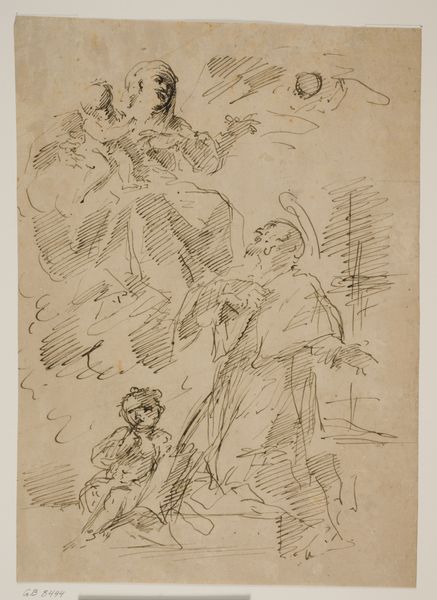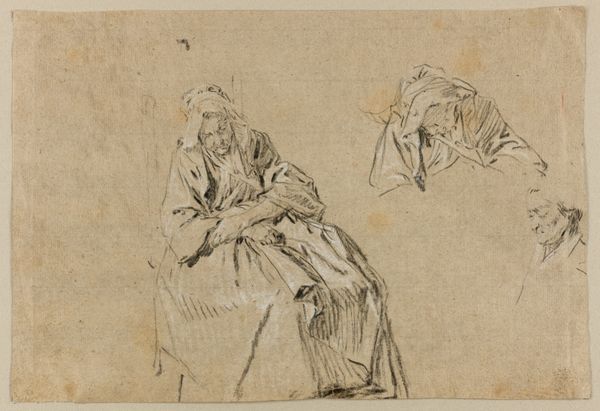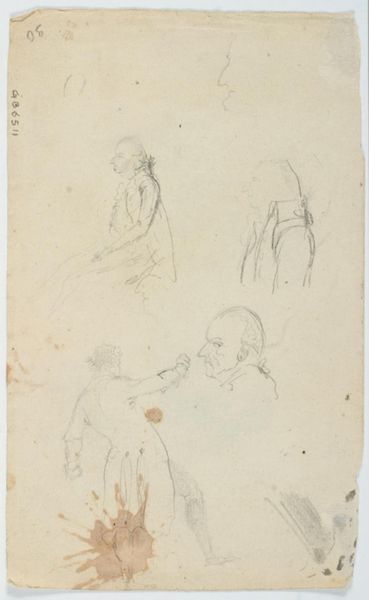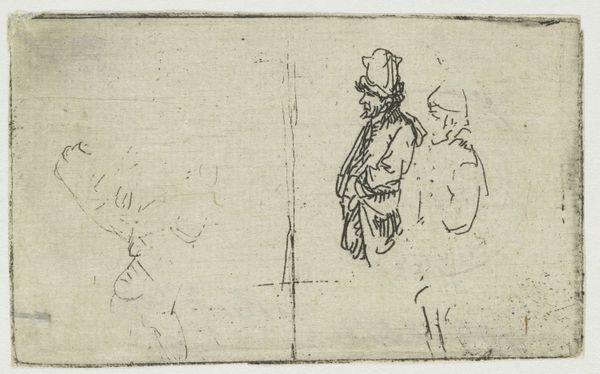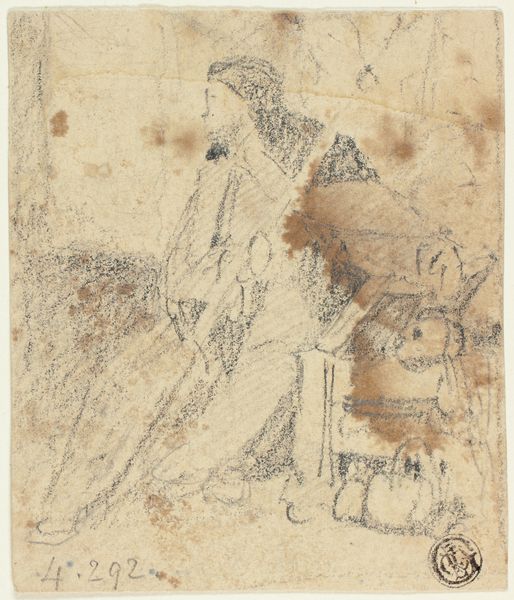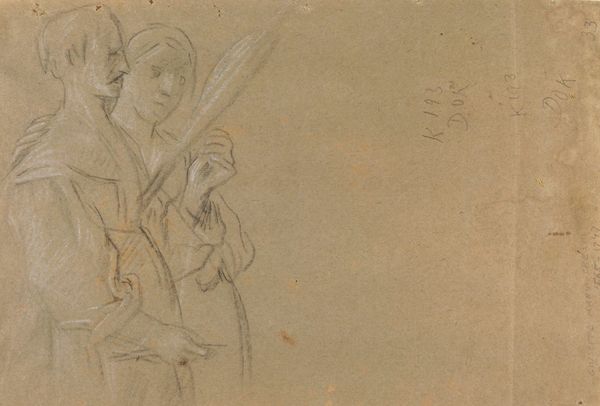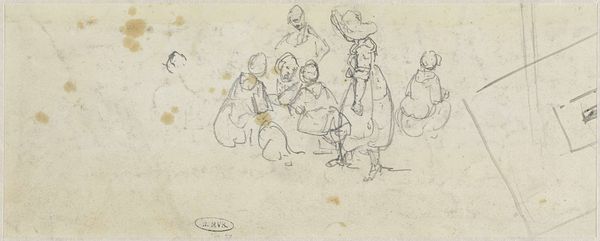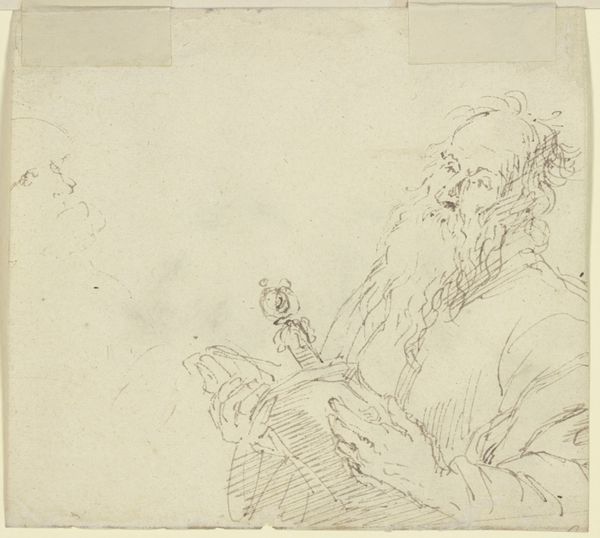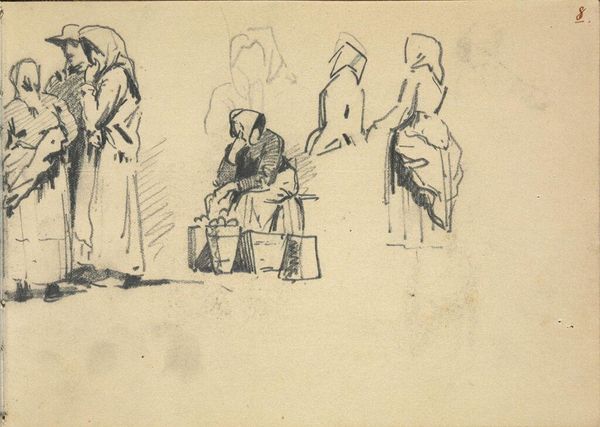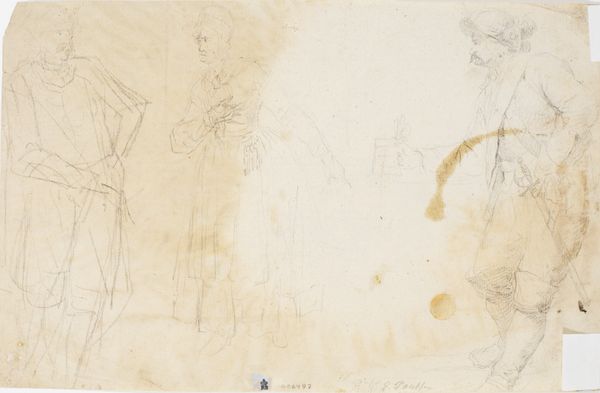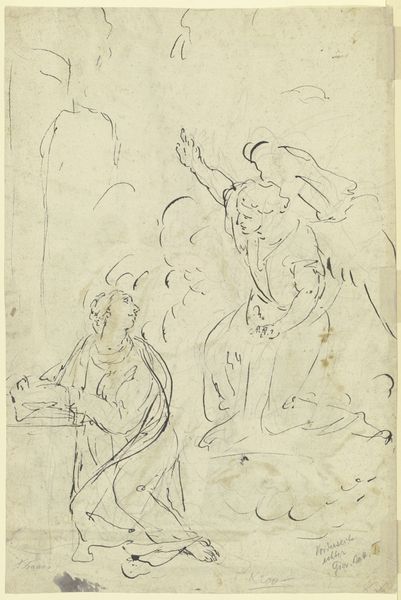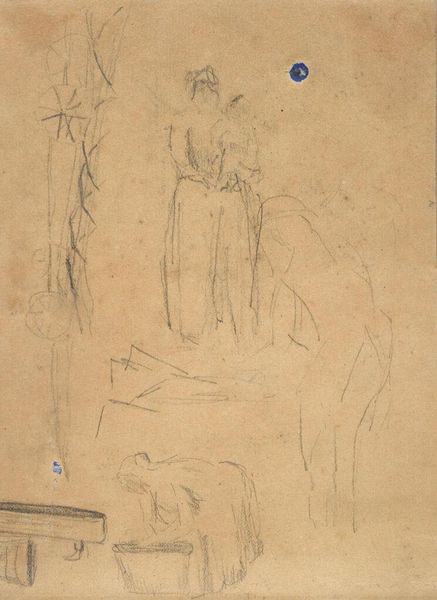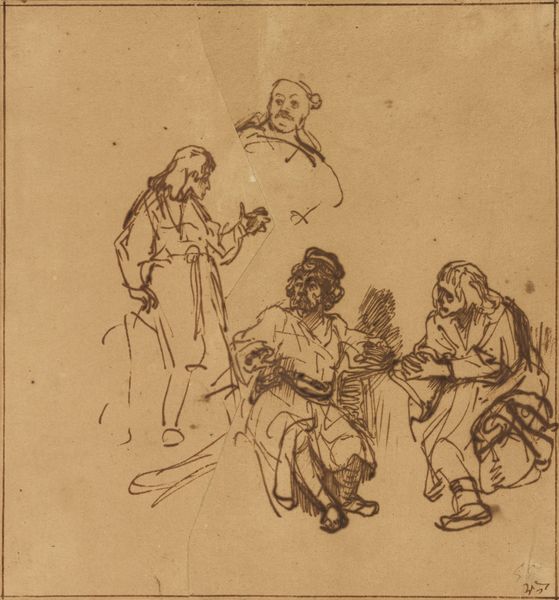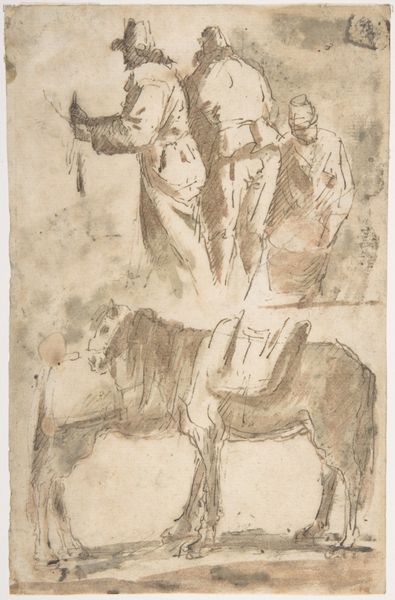
drawing, paper, ink, pen
#
portrait
#
drawing
#
baroque
#
pen sketch
#
pencil sketch
#
figuration
#
paper
#
ink
#
pen
#
history-painting
Dimensions: 8-5/8 x 3-3/4 in
Copyright: Public Domain
Editor: Here we have an interesting drawing, titled "Christ (?) and an Apostle," created sometime in the 18th century, but its artist is unknown. It is made of pen and ink on paper, currently held at the Met. It’s simple but the hatching gives the figures great depth and gravity. How would you interpret the artist's choices in materials and technique? Curator: Considering a materialist perspective, this pen and ink drawing offers insights into the economics and labor practices of the time. The relative accessibility and affordability of paper and ink compared to, say, oils, suggest a specific artistic class engaging with readily available materials. These were widely circulated commodities in the 18th century, meaning these studies could have been disseminated fairly easily as models for prints or paintings. Editor: That's interesting. It makes me think of how drawings weren't always valued as 'art' in the way a painting was, but perhaps as tools for production? Curator: Exactly. Consider the labor involved in creating preparatory sketches. The artist’s hand, the pressure applied to the pen, the controlled application of ink – all demonstrate a process intimately tied to the body and to repetitive, often undervalued, work. It suggests an interesting connection between devotional imagery and the workaday realities of artistic production. Do you notice how the relatively quick and efficient lines allowed for studies exploring different poses or compositions? Editor: I see what you mean! Almost like mass production through artistic exploration... Did the availability of paper change the style? Curator: That's a perceptive question. Yes! The rise of paper production enabled a new fluidity and speed in artistic practices. An artist didn’t have to commit to a large-scale, expensive canvas immediately; the rough paper allowed to experiment quickly. "Christ (?) and an Apostle" beautifully exemplifies the democratization of art through accessible and adaptable materials. Editor: Wow, I had not considered how much the availability of materials and their relative cost and convenience affected the way the art was made, and even its purpose. Thanks! Curator: It also speaks volumes about social values assigned to different mediums during different periods, shifting away from some traditional definitions of 'high art'.
Comments
No comments
Be the first to comment and join the conversation on the ultimate creative platform.
